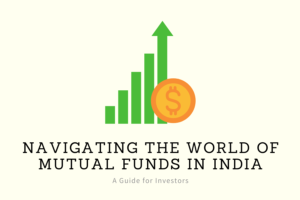Scalping and Day Trading – What are the Differences?

It’s estimated that some 70% of all forex traders lose money over time, while it’s thought that such losses are more pronounced among so-called “day traders”.
This is perhaps why a staggering 80% of all day traders quit within the first two years, while profitable day traders only comprise a small proportion (1.6%) of all FX traders.
Despite this, day trading is relatively popular across the globe, while demand has accelerated since the coronavirus pandemic and significant rise in the number of retail traders operating from home.
Interestingly, day trading is an FX strategy that’s often confused with scalping. But what are the differences between these two strategies, and which one is right for you?
Taking a Closer Look at Day Trading and Scalping
Day trading is a form of speculation in securities, through which participants buy, sell and exchange instruments within the same trading day.
Particularly commonplace in the forex market, day traders can operate without assuming ownership of the underlying assets, while all positions must be closed at the end of each day or trading session.
While scalping is also speculative and prevents traders from carrying trades over until the following day, it’s typically described as a method of arbitrage of minimal price gaps that may occur as a result of the bid-ask spread or temporary broker pricing errors.
As a result, scalpers are much more active and will look to leverage incremental profits through a higher volume of short-term trades, which see positions opened and closed in a matter of minutes.
Scalpers can also use specialised forex arbitrage software to target temporary market and price inefficiencies, minimising risk and optimising their potential returns in the process.
The Core Differences Between Day Trading and Scalping
In addition to ensuring that open positions aren’t maintained overnight (minimising the risks posed by overnight trading sessions in some markets), there are other similarities between day traders and scalpers.
Secondly, both day trading and scalping can be applied to all types of assets in addition to fiat currencies, including stocks, bonds and exchange-traded funds (ETFs).
What’s more, both day traders and scalpers must rely on informed money and risk management strategies, with stop-loss orders among the most effective. Stop-loss orders work by automatically closing positions once they’ve incurred a predetermined level of loss, which you can set prior to executing trades.
But what about the differences between these two trading strategies? The most obvious is the length of time that positions remain open, with scalping defined as a strategy where investors hold onto a particular trade for less than five minutes.
In most cases, skilled or experienced scalpers will close an existing trade in less than two minutes, whereas day traders may retain open positions for a matter of hours.
This also impacts the frequency with which scalpers and day traders operate. More specifically, scalping requires you to open tens or potentially hundreds of trades each day, with this increased volume needed to compensate for the fact that individual trades are less profitable.
Conversely, day traders will execute just a few trades per day, which translates into less market research and is arguably more suited to part-time or inexperienced investors.
However, day traders can rely on tried-and-trusted FX market concepts such as fundamental analysis. Conversely, scalpers don’t have any need to rely on this type of analysis, due largely to the miniscule timeframes in which they operate.
So, Which Strategy is Right for You?
While the similarities between scalping and day trading may draw you toward both as potential investment assets, it’s their differences that will ultimately inform which one is right for you.
For example, the volatile and high volume nature of scalping makes it something of a niche practice, and one that’s best reserved for traders who can handle stress, make quick (and informed) decisions and adapt quickly to market trends and changes.
Conversely, day trading is considerably more structured and allows you to leverage fundamental analysis tools, while you can place fewer trades each day and seek to generate higher levels of profit from each one.
Perhaps the single biggest factor when choosing your preferred trading strategy is your timeframe. This refers to any designated unit of time in which trades are executed, with typical forex timeframes measured in minutes, hours, days and weeks and suited to different risk appetites and outlooks.
So, if your wider trading outlook is risk hungry and encompasses shorter-term timeframes, scalping is a viable option for you.
However, if you’re a little more risk averse and wish to trade slightly longer timeframes, you may want to consider day trading as your preferred forex strategy.






